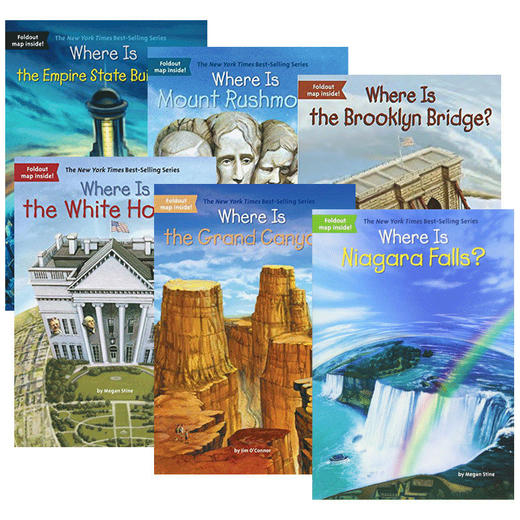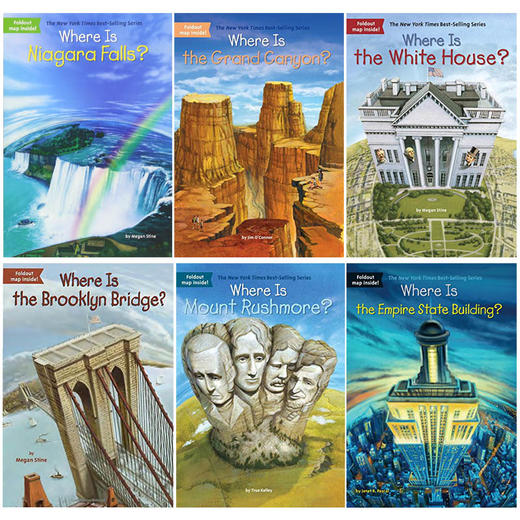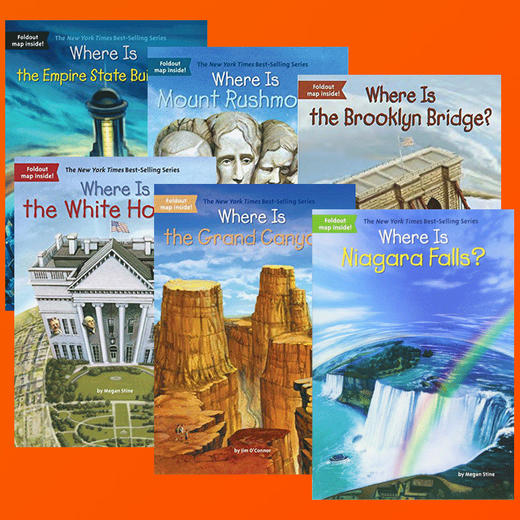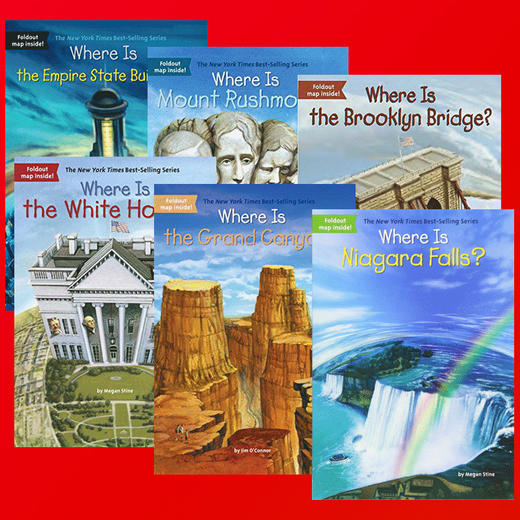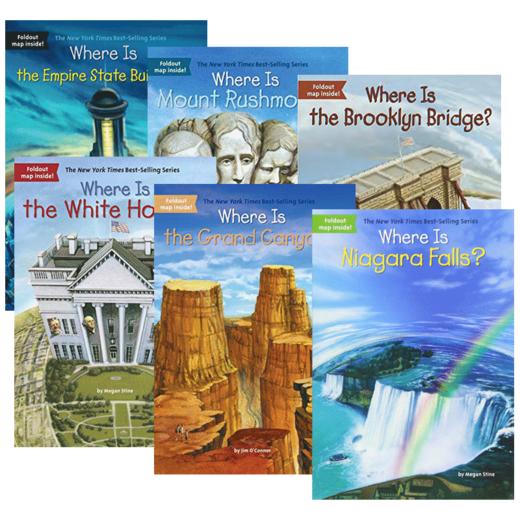英文原版科普读物 Where Is 系列 美国景点主题6本 Where Is the Grand Canyon? 英文版正版进口儿童桥梁章节书 Who Was 姐妹篇
| 运费: | ¥ 0.00-999.00 |
| 库存: | 35 件 |
商品详情
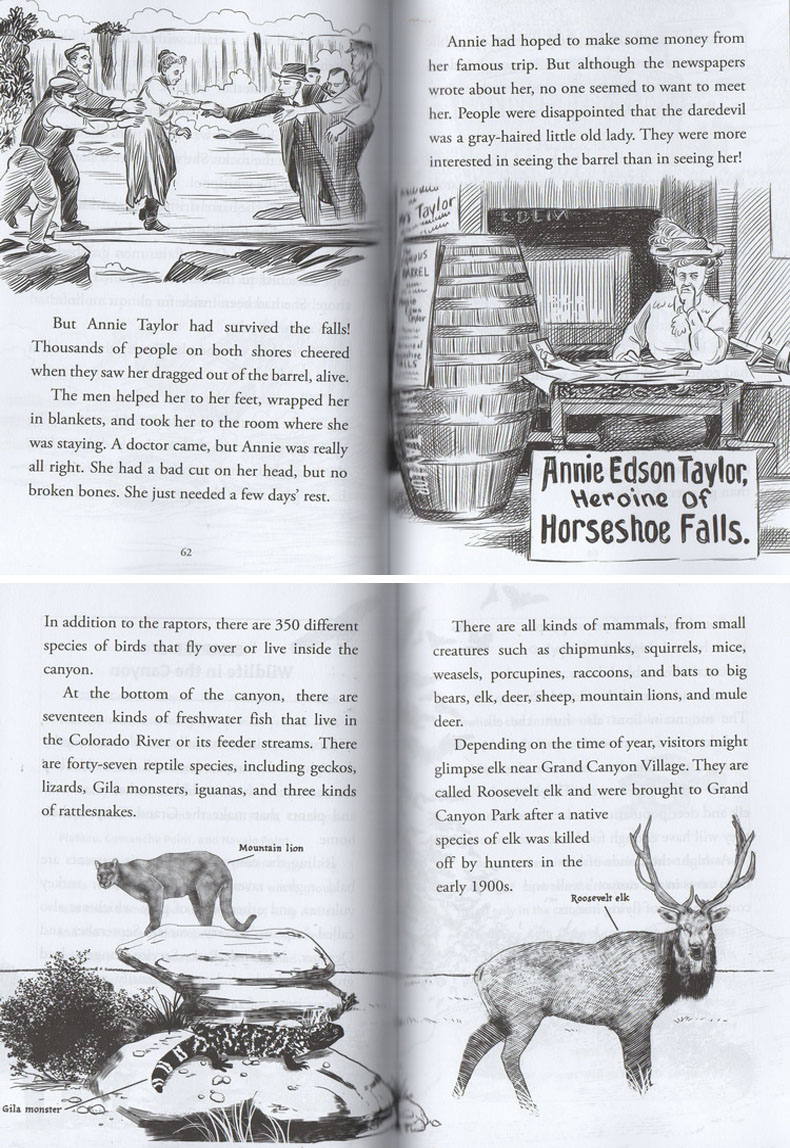

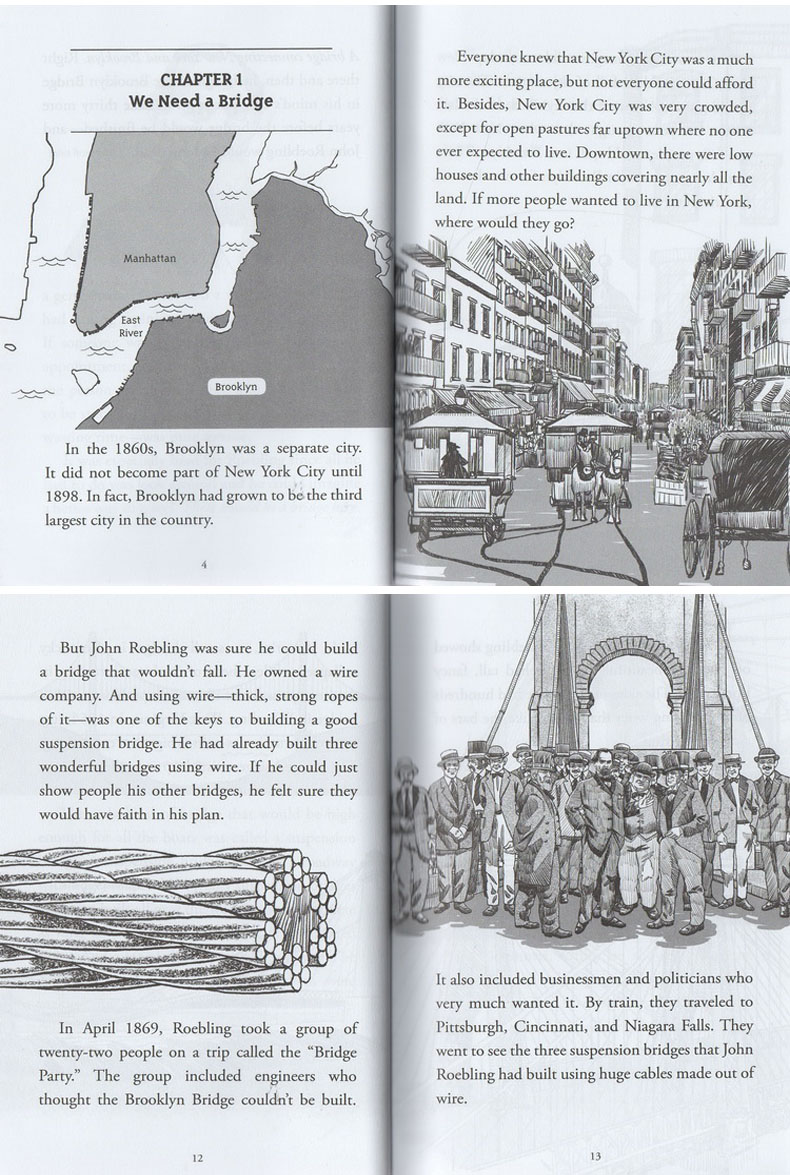
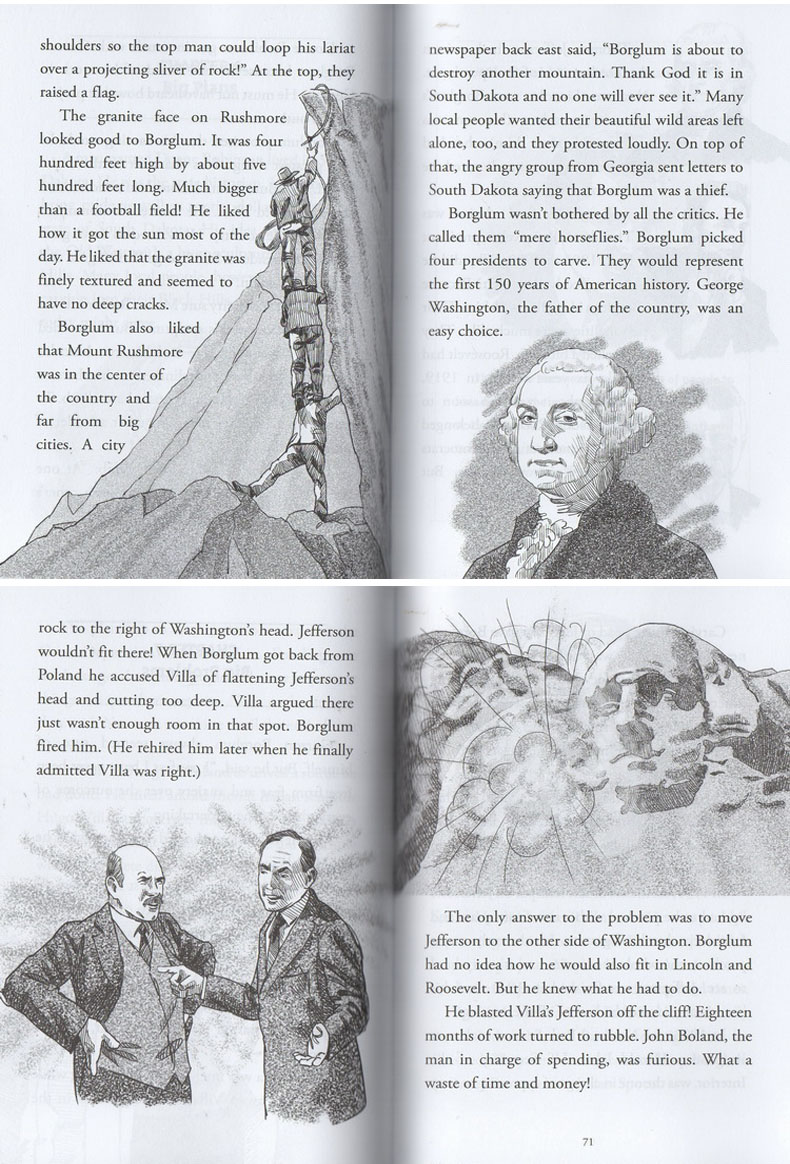
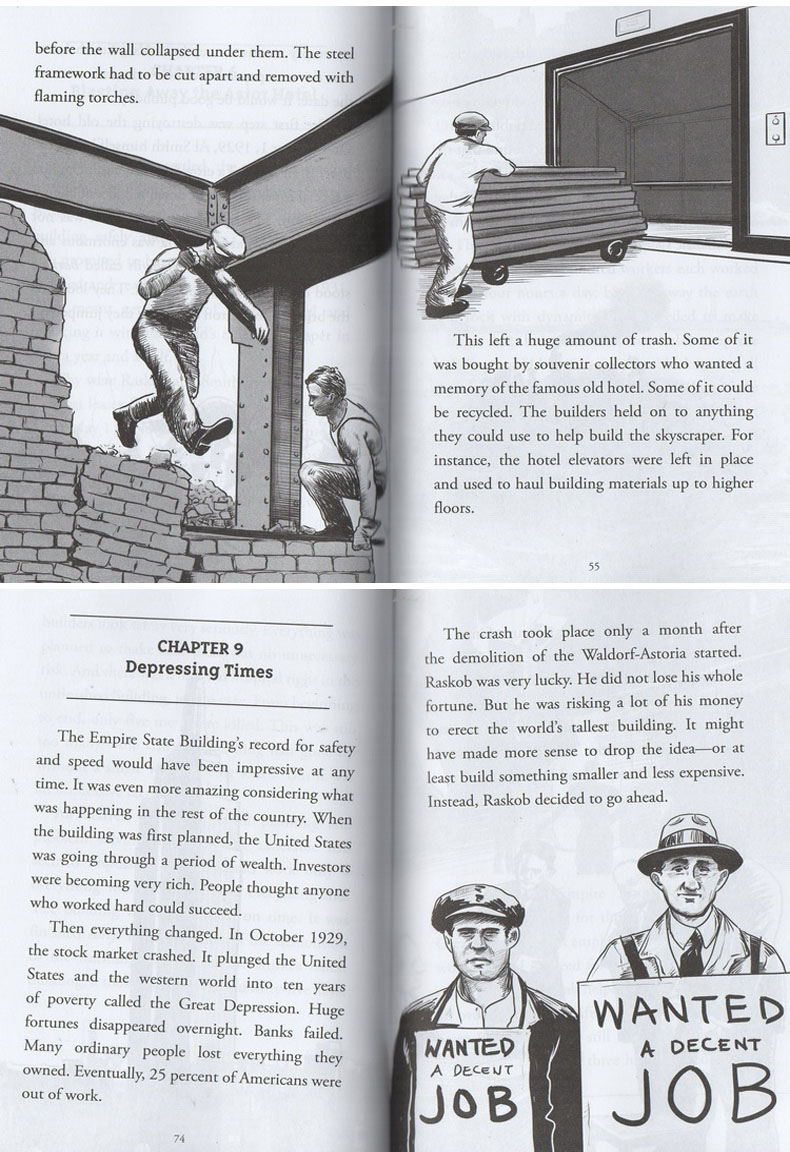
 书名:Where Is…?系列6本
书名:Where Is…?系列6本
难度:Lexile蓝思阅读指数780L-950L
读者对象:8-12岁
作者:Megan Stine, Jim O’Connor
出版社名称:Grosset & Dunlap
语种:英文
商品尺寸:13.5 x 0.7 x 19.4 cm(每册)
包装:平装
页数:112页*6册

企鹅出版社的Where Is…?系列科普读物介绍了众多世界各地的知名景观及自然奇迹。文字浅显易懂,叙述风趣幽默,图文并茂地将每个景观的特色及相关知识,几近完整地呈现。书末另附年代表,以及折叠地图一张,有助于深入理解。
本套Where Is…?系列精选6本,介绍美国知名景点及历史遗迹6处,适合有一定英语基础的中学生及高年级小学生阅读。
From historic landmarks to natural wonders, Penguin’sWhere Is? series goes on a world tour through our globe’s most exciting places.

1.Where Is Niagara Falls?尼亚加拉瀑布在哪里?
While traveling through Canada in 1678, a French priest came across the most gigantic waterfalls he’d ever seen. Stricken with both awe and fear, he began to shake, fell to his knees, and prayed. Ever since, people from all over the world have come to explore Niagara: among them the daredevils determined to tumble down or walk across the falls on tightrope. Kids will get a kick reading about the hare-brained stunts and will also learn how the falls were formed and how—one day—they will disappear.
2.Where Is the Grand Canyon?大峡谷在哪里?
There are canyons all over the planet, and the Grand Canyon in Arizona is not the biggest. Yet because of the spectacular colors in the rock layers and fascinating formations of boulders, buttes, and mesas, it is known as one of the Seven Natural Wonders of the World. Starting with a brief overview of how national parks came into being, this book covers all aspects of the canyon—how it formed, which early native people lived there, and what varied wildlife can be found there now. A history of the canyon’s end-to-end exploration in the late 1860s and how the Grand Canyon became such a popular vacation spot (5 million tourists visit every year) round out this informative, easy-to-read account.
3.Where Is the White House?美国白宫在哪里?
The history of the White House, first completed in 1799, reflects the history of America itself. It was the dream of George Washington to have an elegant “presidential mansion” in the capital city that was named after him. Yet he is the only president who never got to live there. All the rest have made their mark—for better or worse—on the house at 1600 Pennsylvania Avenue. Megan Stine explains how the White House came to be and offers young readers intriguing glimpses into the lives of the First Families—from John and Abigail Adams to Barack and Michelle Obama.
4.Where Is the Brooklyn Bridge?布鲁克林桥在哪里?
Young readers will connect with the story of this National Historic Landmark—the Brooklyn Bridge!
Building the Brooklyn Bridge was no simple feat. Despite a brilliant plan from a father-son team of engineers, the process was a dangerous and grueling one. Construction workers developed a mysterious illness (now known as the bends), several died, and the project had devastating effects on the engineers’ lives. Still, after fourteen years, the Brooklyn Bridge was finished and became the longest suspension bridge in the world at the time and is still widely admired today. Megan Stine tells the fascinating story behind one of the city’s best-loved landmarks. Includes black-and-white illustrations and a foldout color map!
5.Where Is Mount Rushmore?总统山在哪里?
It was world-famous sculptor Gutzon Borglum's dream to carve sixty-foot-high likenesses of four presidents on a granite cliff in South Dakota. Does that sound like a wacky idea? Many at the time thought so. Borglum faced a lot of opposition and problems at every turn; the blasting and carving carried out through the years of the Great Depression when funding for anything was hard to come by. Yet Mount Rushmore now draws almost three million visitors to the Black Hills every year. This is an entertaining chronicle of one man's magnificent obsession, which even today sparks controversy.
6.Where Is the Empire State Building?帝国大厦在哪里?
New York City boasts one of the most famous skylines in the world, and the Empire State Building is undeniably the focal point of this incredible view. At 102 stories, the structure was no small feat. In fact, its construction coincided with the onset of the Great Depression, and so progress was met with numerous setbacks. Still, because of the efficiency that went into the building's development, it only took a year and forty-five days to complete! In this informative, easy-to-read account, Janet B. Pascal describes the rise of skyscrapers in the United States, the intricacies of the groundbreaking construction process, and the effect the iconic Empire State Building continues to have today.
 1.Where Is Niagara Falls?尼亚加拉瀑布在哪里?
1.Where Is Niagara Falls?尼亚加拉瀑布在哪里?2.Where Is the Grand Canyon? 大峡谷在哪里?
3.Where Is the White House?美国白宫在哪里?
4.Where Is the Brooklyn Bridge?布鲁克林桥在哪里?
5.Where Is Mount Rushmore?总统山在哪里?
6.Where Is the Empire State Building?帝国大厦在哪里?

Jim O’Connor is the author of What Was Pompeii?, What Was the Battle of Gettysburg?, and Who Is Bob Dylan?
Megan Stine has written several books for young readers, includingWhere Is the White House?,Who Was Marie Curie?,Who Was Ulysses S. Grant?,Who Is Michelle Obama?, andWho Was Sally Ride?
True Kelleyis the author-illustrator of Who Was Pablo Picasso? and the author of Who Is Dolly Parton?, Who Was Abigail Adams?, and Who Was Roald Dahl?
Janet B. Pascal is an Executive Production Editor at Viking Children’s Books and the author ofWhat Was the Hindenburg?,What Is the Panama Canal?,Who Was Isaac Newton?,Who Was Dr. Seuss?,Who Was Maurice Sendak?, andWho Was Abraham Lincoln?

Where Is the Grand Canyon?
The Grand Canyon in Arizona is one of the United States’ fifty-nine national parks. All are special wilderness areas that are protected by the US government. President Franklin Roosevelt said, “There is nothing so American as our national parks.” Why? Because the parks belong to all the people of our country. They are not private property.
Back when the United States was a young country with limitless open space, not many people saw a need to set aside land for parks.
Even if there had been big parks, few people could have visited them. The majority of Americans worked six days a week. Not many had the time or money to travel more than a few miles from their home.
The first public park in the United States was the Boston Common, in Massachusetts, which was established in 1634. It was both a park and a common grazing area for cows.
In the 1830s, Americans began building cemeteries that were more than places to bury the dead. They had winding roads, ponds, landscaped hills, beautiful statues, and fancy mausoleums. (Mausoleums are like little houses with the dead buried inside them.)
People went to these beautiful cemeteries to have picnics and stroll around the grounds admiring the views. Cemeteries became popular as a kind of public park.
The idea of parks protected by the government began in the mid 1800s. The population was growing. More cities were sprouting all over the country, taking over large areas of land. A small but important group of people realized that the United States had great natural treasures that needed to be preserved for all Americans forever.
For instance, Yosemite, an area in northern California, was known for its special trees. They were called giant sequoias. Some were over three thousand years old. They grew up to three hundred feet high with amazingly thick trunks. A group of Americans wanted to protect Yosemite’s giant sequoia groves from logging and development. In 1864, President Abraham Lincoln made Yosemite a California state park.
The first area to be named a national park was Yellowstone in Wyoming. (Parts of the park are also in Montana and Idaho.)
Yellowstone is a special place because it is home to most of the world’s geysers. A geyser is an underground spring of boiling-hot water that erupts through the surface of the earth. Yellowstone’s most famous geyser is called Old Faithful. In fact, it is the most famous geyser in the world. Every ninety-one minutes, Old Faithful erupts, spraying water 125 feet into the air. Yellowstone National Park was created in 1872 under a law signed by President Ulysses S. Grant.
The president who did the most for national parks was Theodore Roosevelt. He was in office from 1901 to 1909 and is often called the “conservation president.” He wanted to conserve—keep and protect—the beauty of nature in the United States.
President Roosevelt grew up in New York City, but he was a real outdoorsman. As a young man, he became a cattle rancher out west in North Dakota. All his life he loved to hunt and camp out under the stars. He wanted Americans and visitors from other countries to enjoy the beauty of the United States in its most unspoiled form.
More than a century ago Roosevelt saw how dangerous industry could be to natural resources such as water and forests. He said, “We have become great because of the lavish use of our resources. But the time has come to inquire seriously what will happen when our forests are gone, when the coal, the iron, the oil, and the gas are exhausted, when the soils have still further impoverished and washed into the streams, polluting the rivers, denuding the fields and obstructing navigation.”
In 1903 he visited the Grand Canyon. Here’s his description: “In the Grand Canyon, Arizona has a natural wonder which is in kind absolutely unparalleled throughout the rest of the world.” By that, he meant there was no place else like it. Roosevelt said, “You cannot improve on it. The ages have been at work on it, and man can only mar it.”
In the summer of 1913, Roosevelt returned to the Grand Canyon with his sons Archie and Quentin. During their vacation, they rode horses along the rim of the canyon and hunted cougars. Roosevelt wrote about his trip, calling the Grand Canyon “the most wonderful scenery in the world.” He said, “Very wealthy men can have private game preserves of their own. But the average man... can enjoy wild nature, only if… there are big parks or reserves provided for the use of all our people.”
In 1919, Grand Canyon became a national park.
Chapter 1: Birth of a Canyon
Every year five million people from all over the world travel to northern Arizona to see the Grand Canyon. Driving north to the Grand Canyon from Phoenix, Sedona, or Flagstaff, the road gradually climbs to the top of what is called the Colorado Plateau. (A plateau is a large elevated flat area of land.)
There are plenty of signs for the Grand Canyon. All the hotels, restaurants, and stores for tourists announce that you are getting closer. The first sight of the canyon itself doesn’t come until visitors arrive at the South Rim. Even then their view of the canyon is masked by trees and bushes. They must pull off the road at Mather Point Overlook, leave their cars, and walk a short distance to the rim of the Grand Canyon. Then—WOW! Suddenly they look down. People cannot help but gasp in surprise at what they see.
The Grand Canyon twists and turns for 270 miles. It is eighteen miles across at its widest point. This massive canyon was formed by the constant erosion of the Colorado River for the last six million years.
The river has cut through thousands of different layers of rock, so that now the canyon is over a mile deep. The “youngest” rock, near the top, is 250 million years old. The oldest—at the bottom—was formed two billion years ago.
As visitors gaze into the depths of the Grand Canyon, the shifting rays of the sun light up rock formations, smaller side canyons, and amazing colored layers of rock. Some are bright orange, some are golden brown, some are pink and white. Late in the day when the sun begins to set, the landscape turns violet, then darkens to purple before it disappears into the darkness.
At first glance, the Grand Canyon seems empty, but it is teeming with wildlife and countless varieties of plants. The scale is so huge that a boulder larger than a three-story building looks like a small rock to visitors at the rim. Even the mighty Colorado River seems tiny when seen from a mile above.

- 华研外语 (微信公众号认证)
- 本店是“华研外语”品牌商自营店,全国所有“华研外语”、“华研教育”品牌图书都是我司出版发行的,本店为华研官方源头出货,所有图书均为正规正版,拥有实惠与正版的保障!!!
- 扫描二维码,访问我们的微信店铺
- 随时随地的购物、客服咨询、查询订单和物流...
